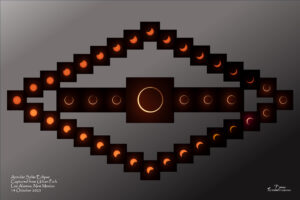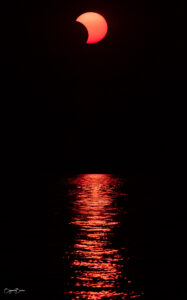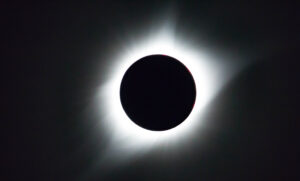Astro Events
Solar
What is a Solar Eclipse?
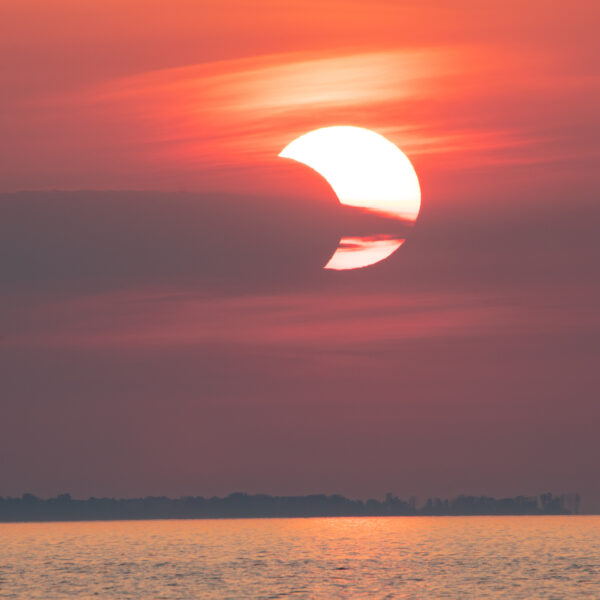
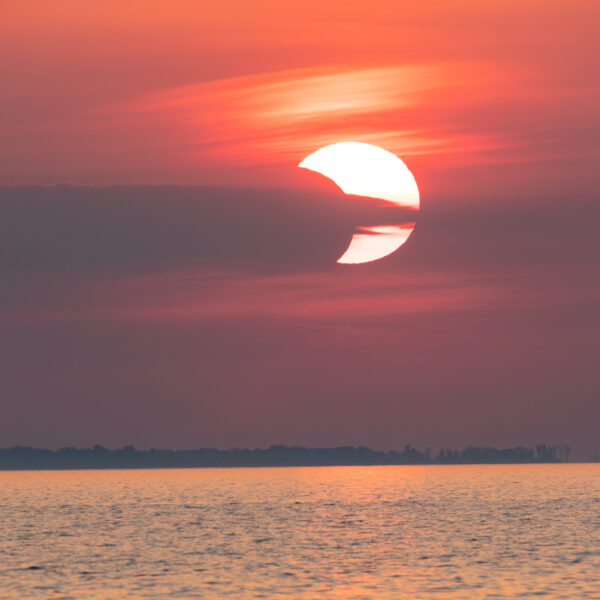
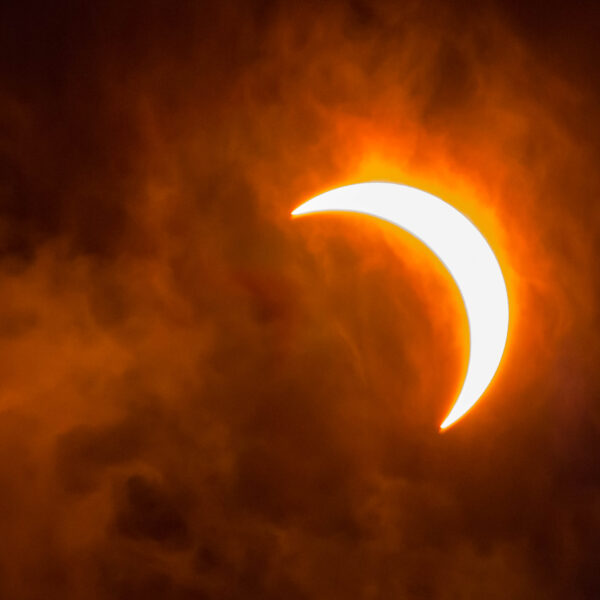
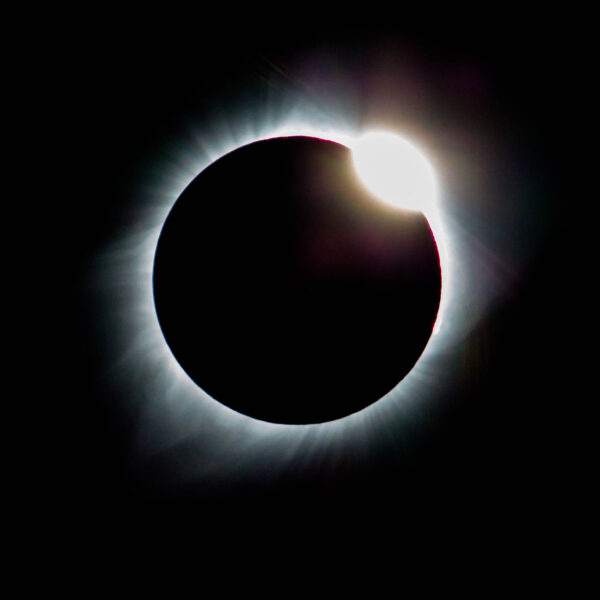
The awe that is inspired when the moon obscures the sun is palpable… People travel from near and far to catch a glimpse of the spectacle. If you don’t believe it – try and get a camping site or a hotel room that lies within the path of totality!
A solar eclipse occurs when the Moon passes between Earth and the Sun, thereby obscuring the view of the Sun from a small part of the Earth, totally or partially. Such an alignment occurs approximately every six months, during the eclipse season in its new moon phase, when the Moon’s orbital plane is closest to the plane of the Earth’s orbit. In a total eclipse, the disk of the Sun is fully obscured by the Moon. In partial and annular eclipses, only part of the Sun is obscured. Unlike a lunar eclipse, which may be viewed from anywhere on the night side of Earth, a solar eclipse can only be viewed from a relatively small area of the world. As such, although total solar eclipses occur somewhere on Earth every 18 months on average, they recur at any given place only once every 360 to 410 years {From: https://en.wikipedia.org/wiki/Solar_eclipse}
{From: https://en.wikipedia.org/wiki/Solar_eclipse}
There are four types of solar eclipses:
Total Solar Eclipse
A total eclipse occurs when the dark silhouette of the Moon completely obscures the intensely bright light of the Sun, allowing the much fainter solar corona to be visible. During any one eclipse, totality occurs at best only in a narrow track on the surface of Earth. This narrow track is called the path of totality.
Annular Solar Eclipse
An annular eclipse occurs when the Sun and Moon are exactly in line with the Earth, but the apparent size of the Moon is smaller than that of the Sun. Hence the Sun appears as a very bright ring, or annulus, surrounding the dark disk of the Moon
Hybrid Solar Eclipse
A hybrid eclipse (also called annular/total eclipse) shifts between a total and annular eclipse. At certain points on the surface of Earth, it appears as a total eclipse, whereas at other points it appears as annular. Hybrid eclipses are comparatively rare.
Partial Solar Eclipse
A partial eclipse occurs when the Sun and Moon are not exactly in line with the Earth and the Moon only partially obscures the Sun. This phenomenon can usually be seen from a large part of the Earth outside of the track of an annular or total eclipse. However, some eclipses can be seen only as a partial eclipse, because the umbra passes above the Earth’s polar regions and never intersects the Earth’s surface. Partial eclipses are virtually unnoticeable in terms of the Sun’s brightness, as it takes well over 90% coverage to notice any darkening at all. Even at 99%, it would be no darker than civil twilight.
The Sun’s distance from Earth is about 400 times the Moon’s distance, and the Sun’s diameter is about 400 times the Moon’s diameter. Because these ratios are approximately the same, the Sun and the Moon as seen from Earth appear to be approximately the same size: about 0.5 degree of arc in angular measure.
The Moon’s orbit around the Earth is slightly elliptical, as is the Earth’s orbit around the Sun. The apparent sizes of the Sun and Moon therefore vary. The magnitude of an eclipse is the ratio of the apparent size of the Moon to the apparent size of the Sun during an eclipse. An eclipse that occurs when the Moon is near its closest distance to Earth (i.e., near its perigee) can be a total eclipse because the Moon will appear to be large enough to completely cover the Sun’s bright disk or photosphere; a total eclipse has a magnitude greater than or equal to 1.000. Conversely, an eclipse that occurs when the Moon is near its farthest distance from Earth (i.e., near its apogee) can be only an annular eclipse because the Moon will appear to be slightly smaller than the Sun; the magnitude of an annular eclipse is less than 1.
A hybrid eclipse occurs when the magnitude of an eclipse changes during the event from less to greater than one, so the eclipse appears to be total at locations nearer the midpoint, and annular at other locations nearer the beginning and end, since the sides of the Earth are slightly further away from the Moon. These eclipses are extremely narrow in their path width and relatively short in their duration at any point compared with fully total eclipses; the 2023 April 20 hybrid eclipse’s totality is over a minute in duration at various points along the path of totality. Like a focal point, the width and duration of totality and annularity are near zero at the points where the changes between the two occur.
Because the Earth’s orbit around the Sun is also elliptical, the Earth’s distance from the Sun similarly varies throughout the year. This affects the apparent size of the Sun in the same way, but not as much as does the Moon’s varying distance from Earth. When Earth approaches its farthest distance from the Sun in early July, a total eclipse is somewhat more likely, whereas conditions favour an annular eclipse when Earth approaches its closest distance to the Sun in early January.
Terminology of the Eclipse Phases
Central eclipse is often used as a generic term for a total, annular, or hybrid eclipse. This is, however, not completely correct: the definition of a central eclipse is an eclipse during which the central line of the umbra touches the Earth’s surface. It is possible, though extremely rare, that part of the umbra intersects with the Earth (thus creating an annular or total eclipse), but not its central line. This is then called a non-central total or annular eclipse. Gamma is a measure of how centrally the shadow strikes. The last (umbral yet) non-central solar eclipse was on 29 April 2014. This was an annular eclipse. The next non-central total solar eclipse will be 9 April 2043.
The visual phases observed during a total eclipse are called:
- First contact—when the Moon’s limb (edge) is exactly tangential to the Sun’s limb.
- Second contact—starting with Baily’s Beads (caused by light shining through valleys on the Moon’s surface) and the diamond ring effect. Almost the entire disk is covered.
- Totality—the Moon obscures the entire disk of the Sun and only the solar corona is visible.
- Third contact—when the first bright light becomes visible and the Moon’s shadow is moving away from the observer. Again a diamond ring may be observed.
- Fourth contact—when the trailing edge of the Moon ceases to overlap with the solar disk and the eclipse ends.


